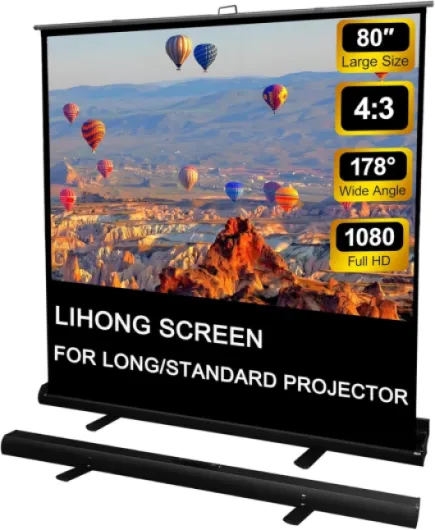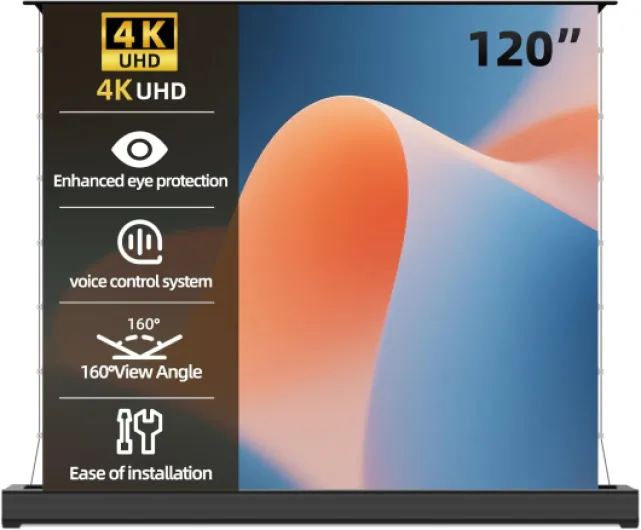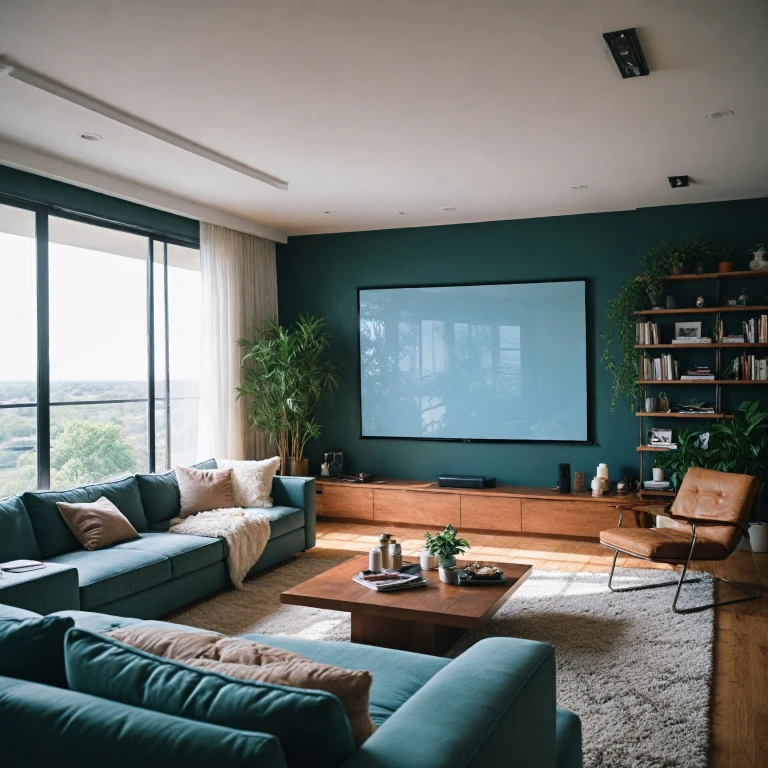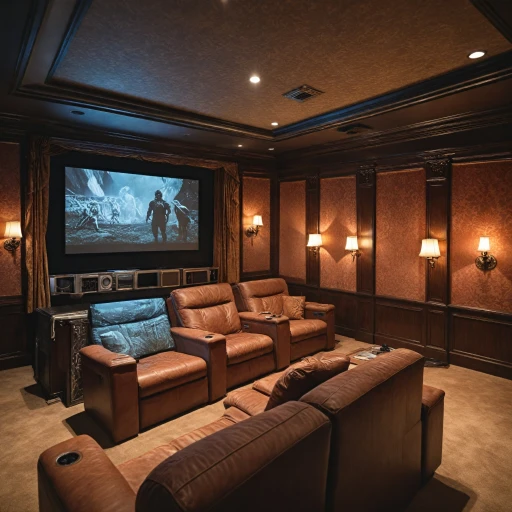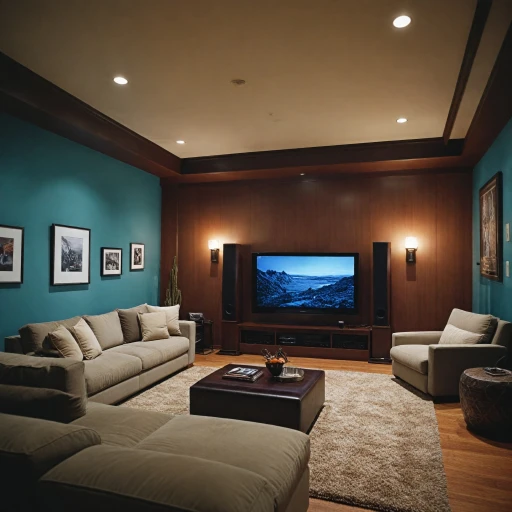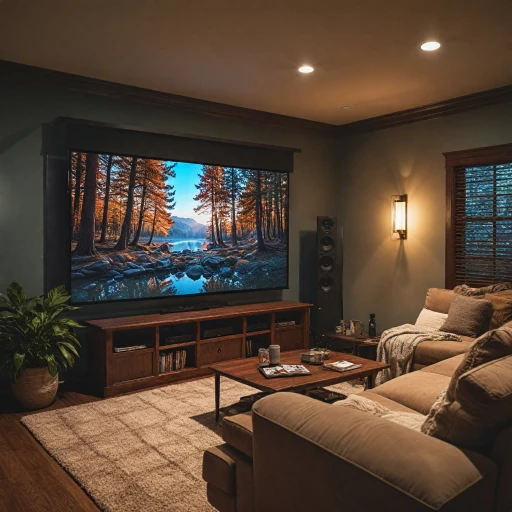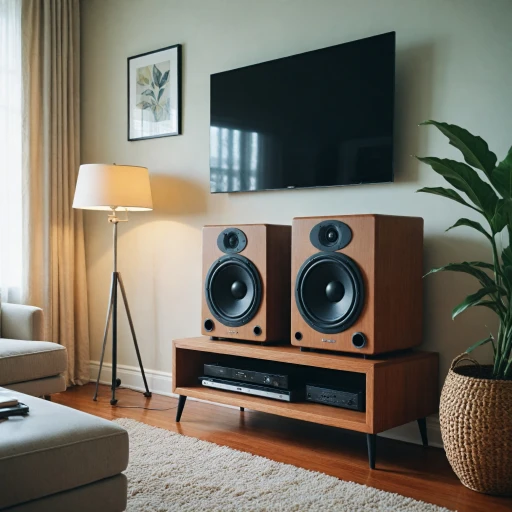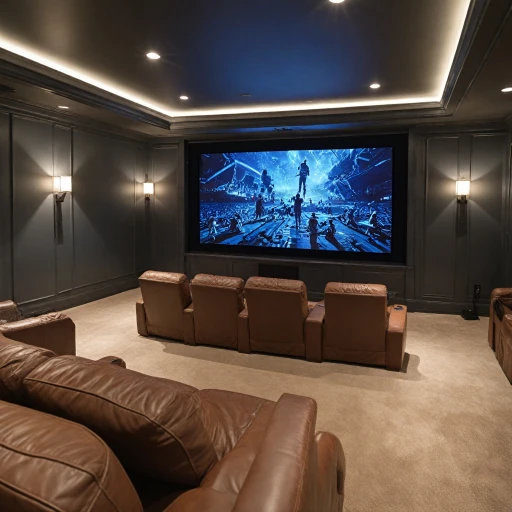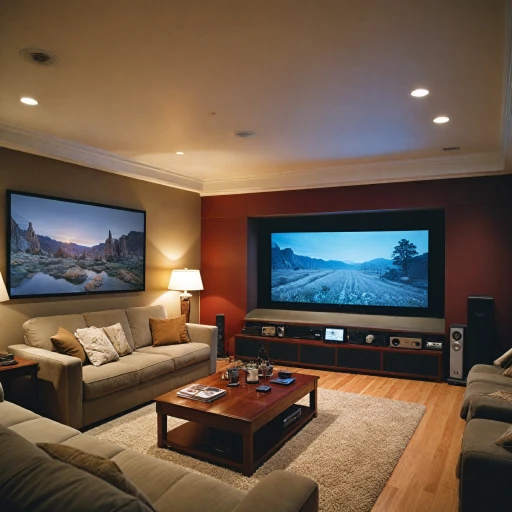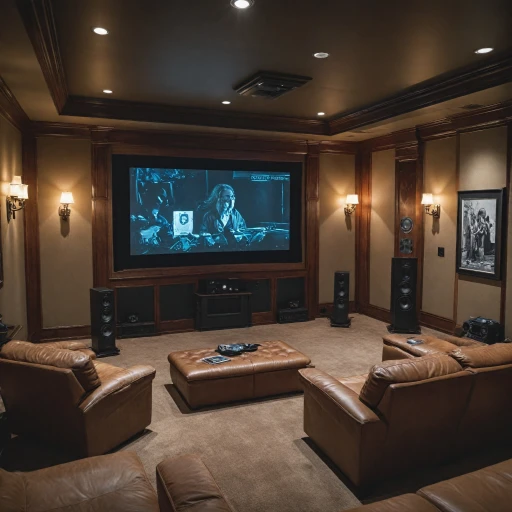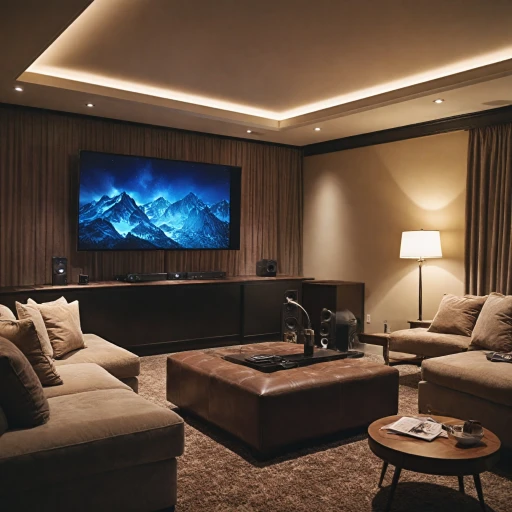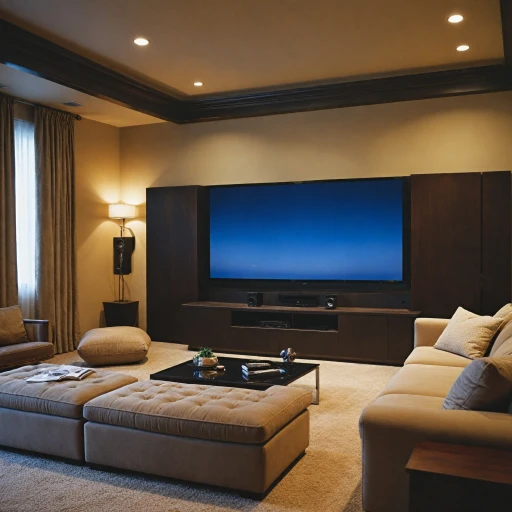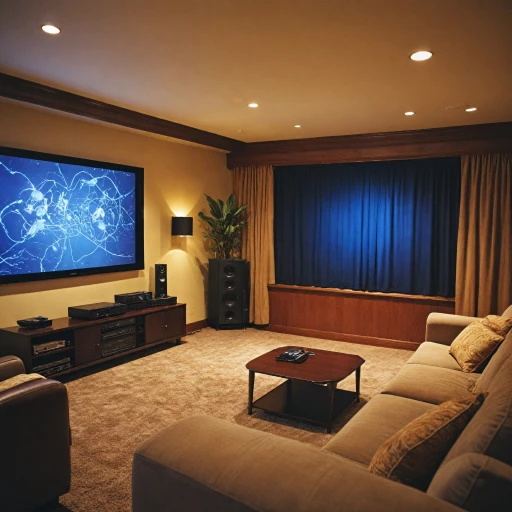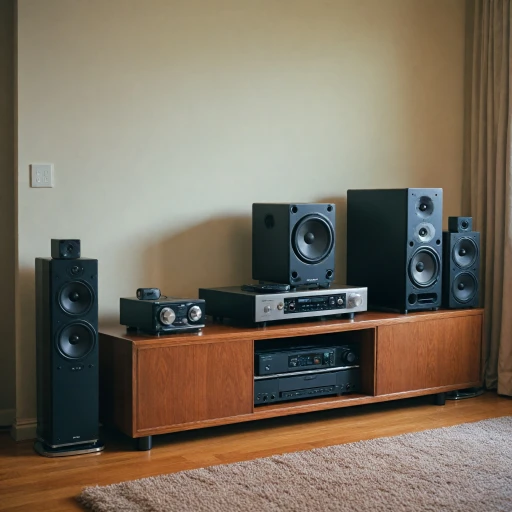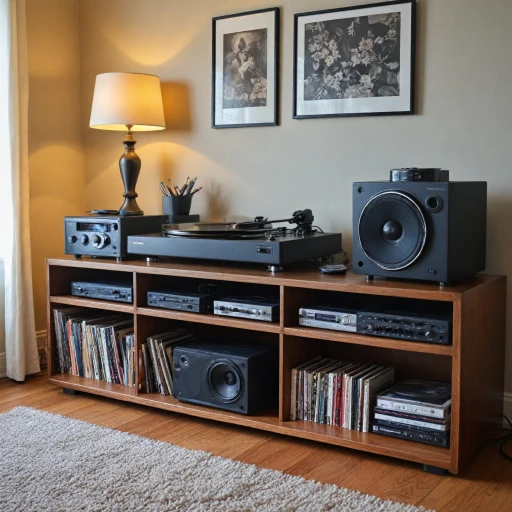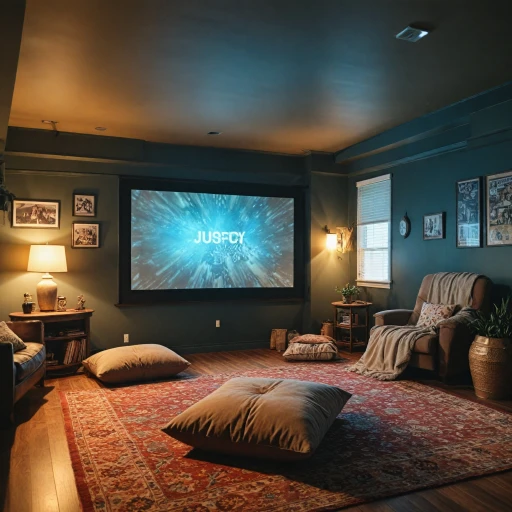
Understanding Floor-Rising Projector Screens
Introduction to Floor-Rising Projector Screens
Floor-rising projector screens, a modern innovation in home theater setups, offer a flexible and sleek solution for individuals looking to enhance their viewing experience. Unlike traditional overhead-mounted screens, these screens rise from the floor, providing a unique aesthetic that complements any room decor. Such screens are particularly useful in spaces where wall mounting is not feasible or preferred. Floor-rising screens typically feature a motorized mechanism, enabling effortless deployment and retraction. Brands like Vividstorm and Elite offer high-quality options in various price ranges and specifications, such as ultra short throw or short throw capabilities, to suit different projectors. These screens are often paired with ambient light rejecting (ALR) technology, designed to improve picture quality by minimizing the impact of ambient light on the viewing experience. To maximize the benefits of floor-rising screens, it's essential to understand the different specifications, such as gain, viewing angle, and type, whether acoustically transparent or matte white. The projected image is influenced by these factors, making it crucial to choose the right screen for your specific home theater needs. For more insights into the fundamentals and advantages of using a fixed projection screen in conjunction with your projector, you can explore further details here.Benefits of Floor-Rising Screens in Home Theaters
Transform Your Home Theater Setup
Floor-rising projector screens are truly a game-changer for home theater enthusiasts. One of the standout benefits is their ability to offer a seamless viewing experience while maintaining a clutter-free environment. When not in use, these screens can retract into a sleek and unobtrusive base, seamlessly blending into your room’s décor.
Maximizing Versatility and Space
Floor-rising screens are perfect for those with limited wall space or unique room layouts, providing flexibility in mounting options. You can pair them with ultra short throw or short throw projectors without compromising on picture clarity. This is particularly beneficial when considering the importance of maintaining the optimal throw distance and viewing angle in smaller rooms.
Superior Image Quality with ALR Screens
Ambient light rejecting (ALR) technology is a significant advantage of these floor-rising screens. This feature ensures vibrant and dynamic images even in well-lit environments, making it ideal for multi-purpose spaces. ALR screens enhance color accuracy and contrast, outperforming standard matte white or acoustically transparent screens in various lighting conditions.
Affordable Elegance and Functionality
While the initial price might be a consideration, the long-term benefits of investing in a floor-rising screen often justify the cost. Brands like Vividstorm and Elite offer motorized and manually operated options that cater to different budgets and preferences, ensuring you achieve a professional home theater experience.
Considerations Before Purchasing
Important Factors Before You Decide
Choosing the right floor-rising projector screen for your home theater involves several considerations to ensure it meets your viewing needs and integrates seamlessly into your setup. Here are some points to keep in mind as you make your decision:- Screen Size and Viewable Diagonal: The size of the screen will significantly impact your viewing experience. Measure your room to determine the maximum viewable diagonal that fits without overpowering your space.
- Type and Gain of Screen Material: Reflective properties play a crucial role in picture quality. A matte white screen may be suitable for a controlled light environment, while an ambient light rejecting (ALR) screen is ideal for brighter rooms.
- Compatibility with Projector Type: Ensure your screen is compatible with your projector. Short throw and ultra short throw projectors require specific screen types to optimize image clarity and sizing.
- Motorized vs Manual: Decide between motorized floor or manual screen options. Motorized screens, while often pricier, offer convenience and a sleek, modern touch.
- Viewing Angle: Depending on your seating arrangement, a wide viewing angle can be crucial, especially in larger spaces where spectators are spread out.
- Mount Type: Consider where you want to place your rising screen. Ensure the mount supports both the weight and the operational mechanism of the screen.
- Budgetary Considerations: The price can vary widely between basic models and high-end screens like Vividstorm or Elite. Assess your budget alongside feature needs to make an informed decision.
Installation Tips and Tricks
Getting Started with Installation
Installing a floor-rising projector screen can transform your home theater setup, but it requires some attention to detail. Whether you're working with a Vividstorm or an Elite model, following the right steps will ensure optimal performance and longevity of your screen.
Choosing the Right Spot
The first step is selecting the ideal location for your screen. Consider the viewing angle and the throw distance of your projector. Short throw and ultra short throw projectors are particularly sensitive to placement, so make sure the screen is positioned to accommodate these specifications. Ambient light rejecting (ALR) screens are beneficial in rooms with high ambient light, as they help maintain picture quality.
Mounting and Setup
- Mount Type: Depending on your space, you might opt for a floor mount or a ceiling mount. Ensure the mount type suits your room's layout.
- Leveling: Use a level to ensure your screen is perfectly aligned. This is crucial for achieving the best picture quality, especially with ultra short throw projectors.
- Motorized Mechanism: If your screen is motorized, ensure the motor functions smoothly. Test the rising and lowering mechanism several times to confirm reliability.
Calibrating Your Projector
After installation, calibrate your projector for the best results. Adjust the brightness, contrast, and color settings to match the screen's gain and format HDTV specifications. A matte white screen surface can offer a neutral color palette, making it easier to achieve accurate colors.
Final Checks
Once everything is in place, conduct a final check. Ensure the screen rises and retracts without any hitches. Check the viewable diagonal to confirm it matches the specifications. If your screen is acoustically transparent, verify that audio quality is not compromised.
By following these steps, you can ensure your floor-rising projector screen is set up for the best possible viewing experience.
Maintenance and Care
Preserving Your Floor-Rising Projector Screen's Performance
Maintaining the longevity and performance of your floor-rising projector screen involves a few essential steps. With the right care strategies, you can enjoy your vividstorm or elite motorized screen for years to come.- Regular Cleaning: Dust and dirt can accumulate on your matte white or ALR screen, potentially affecting its viewing quality. Use a soft, dry cloth to regularly wipe the screen surface. If deeper cleaning is required, opt for a specialized screen cleaner that is safe for the material type. Avoid using water or harsh chemicals, which might damage the light rejecting properties of an ALR screen.
- Check the Mechanism: Given that the screen is motorized and rises from the floor, regularly inspect the motorized floor mechanism for any signs of wear or malfunction. Listening to unusual noises or hesitations during operation can be an indicator that the screen's motor needs servicing.
- Handle with Care: While the floor rising screens are robust, they should still be handled gently. Ensure that the path of the screen is unobstructed when in motion to prevent potential damage.
- Storage Protocol: When not in use, keep the screen retracted. This not only prolongs the screen's lifespan but also protects it from unintentional damage, especially if you use short throw or ultra-short throw projectors that are calibrated closely with the screen's positioning.
- Environmental Considerations: Be wary of the screen's surroundings. Protect it from direct sunlight, excessive humidity, or extreme temperatures, as these can deteriorate the screen's material or motor.
Comparing Floor-Rising Screens with Other Types
Comparing Different Types of Projector Screens
When selecting the right screen type for your home theater setup, it's crucial to understand the differences between floor-rising projector screens and other available options. Floor rising screens offer a unique set of advantages, but you should weigh them alongside other types to ensure you're making the best choice for your space.- Floor-Rising vs. Fixed Frame Screens: While fixed frame screens provide a permanent, optimized viewing surface, floor rising screens boast flexibility and space-saving benefits. They can be tucked away when not in use, making them ideal for multipurpose rooms.
- Floor-Rising vs. Ceiling Mounted Screens: Ceiling mounted models also save space and disappear when not in use. However, they require more involved installation and are not as easily portable. Floor-rising screens, especially the motorized floor types like the Vividstorm and Elite screens, offer a convenient balance with their motorized lift mechanisms.
- Floor-Rising vs. ALR Screens: Ambient light rejecting (ALR) screens excel in environments with high ambient light and can dramatically enhance image quality when paired with short throw projectors. While floor-rising versions are available with ALR technology, generally, standalone ALR screens could offer better light rejection if ambient light is a significant concern.
- Viewability: Floor-rising screens compete with others in terms of offering diverse viewing angles and throw types, accommodating both short and ultra short throw projectors. Look for a matte white surface with suitable gain to complement the projector’s light output and desired viewing experience.

